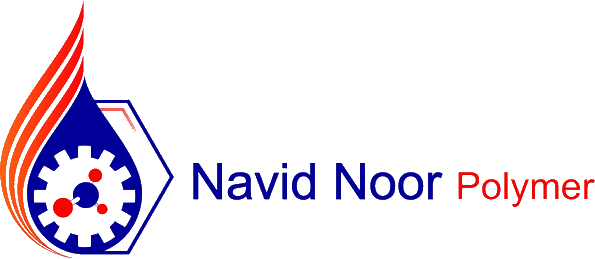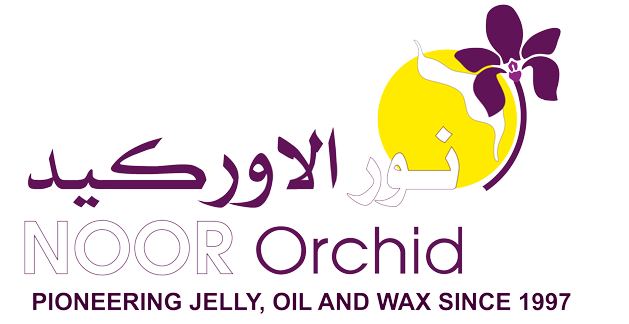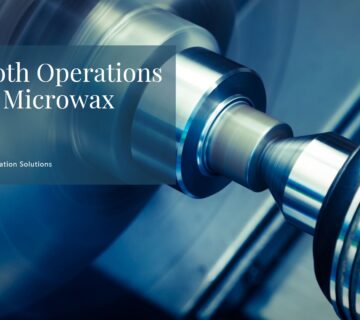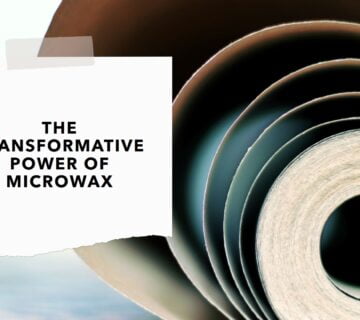Chemical Composition and Properties of Paraffin Oil and Its Variants: A Comprehensive Analysis
Introduction to Paraffin Oil and Its Variants
Paraffin oil, mineral oil, paraffin wax, and micro wax are all petroleum-derived products that play significant roles in various industries. As a chemical engineer, I’ve spent years studying these substances and their applications. In this comprehensive analysis, I’ll delve into the intricate chemical compositions and properties of these materials, exploring how their molecular structures influence their behaviors and uses. Understanding these substances is crucial for anyone working in industries ranging from cosmetics to automotive manufacturing.
1.1 The Fascinating World of Hydrocarbons
When I first started studying petroleum-derived products, I was immediately captivated by the complexity of hydrocarbons. These organic compounds, consisting primarily of hydrogen and carbon atoms, form the basis of paraffin oil and its variants. The arrangement of these atoms in different structures leads to a wide variety of properties and applications. From lightweight, liquid paraffin oils to solid, crystalline paraffin waxes, the diversity within this family of compounds is truly remarkable.
1.2 Historical Context and Discovery
The history of paraffin oil and its variants is intrinsically linked to the development of the petroleum industry. I find it fascinating that these substances, which have become so integral to our modern world, were once considered waste products of kerosene production. The discovery of their unique properties in the mid-19th century led to a revolution in various industries. From lighting to lubrication, these hydrocarbons quickly found their place in both industrial and consumer applications.
1.3 Defining Paraffin Oil, Mineral Oil, Paraffin Wax, and Micro Wax
To set the stage for our in-depth exploration, let’s clearly define each of these substances. Paraffin oil, also known as liquid paraffin, is a highly refined mineral oil consisting of saturated hydrocarbons. Mineral oil is a broader term that encompasses paraffin oil and other light mixtures of alkanes. Paraffin wax is a solid form of alkanes with a higher molecular weight, typically containing between 20 to 40 carbon atoms. Micro wax, or microcrystalline wax, is similar to paraffin wax but with a higher molecular weight and more branched and cyclic hydrocarbons.
1.4 The Importance of Understanding Chemical Composition
As a researcher, I’ve found that understanding the chemical composition of these substances is crucial for predicting their behavior and optimizing their use in various applications. The number of carbon atoms, the presence of branched or linear chains, and the degree of saturation all play significant roles in determining properties such as melting point, viscosity, and solubility. This knowledge is not just academic; it has real-world implications for product formulation, quality control, and innovation across multiple industries.
1.5 Overview of Industrial and Consumer Applications
The versatility of paraffin oil and its variants never ceases to amaze me. In my work, I’ve encountered these substances in applications ranging from cosmetics and pharmaceuticals to food processing and industrial lubricants. Paraffin oil is commonly used as a lubricant and in cosmetic formulations. Mineral oil finds applications in everything from baby oil to cutting fluids in metalworking. Paraffin wax is crucial in candle making and as a coating for various products. Micro wax, with its unique properties, is vital in industries like adhesives and polishes. This wide range of applications underscores the importance of a thorough understanding of these materials.
Chemical Composition of Paraffin Oil
Diving deeper into the world of hydrocarbons, I find paraffin oil to be a fascinating subject. Its chemical composition, while seemingly simple, has a profound impact on its properties and applications. As I explore the molecular structure of paraffin oil, I’m continually amazed by how small variations at the atomic level can lead to significant differences in macroscopic properties. Understanding these nuances is crucial for anyone working with or studying this versatile substance.
2.1 Molecular Structure of Paraffin Oil
At its core, paraffin oil consists of saturated hydrocarbons, primarily alkanes with the general formula C_nH_(2n+2). In my research, I’ve found that most paraffin oils contain hydrocarbons with carbon chains ranging from C14 to C40. The exact distribution of chain lengths can vary depending on the source and refining process. These long, straight-chain hydrocarbons give paraffin oil its characteristic properties, including its low reactivity and excellent lubricating qualities.
2.2 Types of Hydrocarbons in Paraffin Oil
While straight-chain alkanes dominate the composition of paraffin oil, it’s important to note that other types of hydrocarbons are also present. In my analyses, I’ve identified small amounts of branched alkanes and cycloalkanes. These structure variations contribute to the overall properties of the oil. For instance, the presence of branched alkanes can affect the oil’s viscosity and pour point, while cycloalkanes may influence its solubility characteristics.
2.3 Degree of Refinement and Purity
The purity of paraffin oil is a critical factor that I always consider in my work. Highly refined paraffin oil, often used in pharmaceutical and cosmetic applications, undergoes extensive processing to remove impurities and unwanted compounds. This refinement process typically involves treatments such as acid washing, catalytic dewaxing, and hydrogenation. The result is a product with minimal aromatic content and a very low level of unsaturated hydrocarbons, ensuring its stability and safety for sensitive applications.
2.4 Isomeric Variations in Paraffin Oil Composition
One aspect of paraffin oil composition that I find particularly intriguing is the presence of isomeric variations. Even among straight-chain alkanes of the same carbon number, different structural isomers can exist. For example, a C18 alkane could be n-octadecane or any of its isomers with methyl branches. These isomeric variations, while subtle, can influence properties such as melting point and viscosity. In my research, I’ve used advanced analytical techniques like gas chromatography-mass spectrometry (GC-MS) to identify and quantify these isomeric distributions.
2.5 Trace Components and Their Impact
While the bulk of paraffin oil consists of saturated hydrocarbons, trace components can play a significant role in its overall properties. In my analytical work, I’ve detected minute quantities of sulfur compounds, nitrogen-containing molecules, and oxygenates. These trace components, often present at parts-per-million levels, can impact the oil’s color, odor, and stability. Understanding and controlling these trace components is crucial, especially in high-purity applications where even small impurities can have significant effects.
Properties and Characteristics of Paraffin Oil
As I delve deeper into the world of paraffin oil, I’m continually fascinated by how its chemical composition translates into a unique set of physical and chemical properties. These properties not only define the behavior of paraffin oil in various applications but also set it apart from other petroleum-derived products. In my work, I’ve found that understanding these properties is crucial for optimizing the use of paraffin oil in diverse industries, from pharmaceuticals to industrial lubricants.
3.1 Viscosity and Flow Characteristics
One of the most important properties of paraffin oil that I’ve studied extensively is its viscosity. The long, straight-chain hydrocarbons in paraffin oil contribute to its relatively high viscosity compared to other hydrocarbon liquids. I’ve observed that the viscosity of paraffin oil is highly temperature-dependent, decreasing significantly as temperature increases. This property makes paraffin oil an excellent choice for applications requiring temperature-stable lubrication. In my research, I’ve used rheological studies to characterize the flow behavior of different grades of paraffin oil, providing valuable insights for formulation scientists and engineers.
3.2 Thermal Properties and Heat Capacity
The thermal properties of paraffin oil have always intrigued me. Its high heat capacity makes it an excellent medium for heat transfer applications. In my laboratory work, I’ve measured the specific heat capacity of various grades of paraffin oil, finding values typically ranging from 2.1 to 2.5 J/g·K at room temperature. This property, combined with its low thermal conductivity, makes paraffin oil an ideal candidate for applications such as thermal baths and certain types of heat exchangers. I’ve also studied its behavior at extreme temperatures, noting its excellent stability even at high temperatures, which is crucial for many industrial applications.
3.3 Solubility and Compatibility
Understanding the solubility characteristics of paraffin oil has been crucial in my work with formulations and material compatibility. As a non-polar substance, paraffin oil is insoluble in water but readily miscible with other non-polar organic solvents. This property makes it an excellent choice for water-repellent coatings and as a base for oil-based products. However, I’ve found that its compatibility with plastics and elastomers can vary. In my research, I’ve conducted extensive compatibility studies, testing paraffin oil with various materials to ensure its suitability for specific applications, particularly in the automotive and packaging industries.
3.4 Chemical Stability and Reactivity
One of the most valuable properties of paraffin oil, in my experience, is its exceptional chemical stability. The saturated nature of its hydrocarbon chains makes it resistant to oxidation and chemical degradation under normal conditions. This stability is a key reason for its widespread use in long-term applications such as transformer oils and certain types of lubricants. However, I always caution that under extreme conditions, such as high temperatures or in the presence of strong oxidizing agents, even paraffin oil can undergo degradation. My research has included studying the oxidation kinetics of paraffin oil under various conditions, providing valuable data for predicting its long-term stability in different applications.
3.5 Optical and Electrical Properties
In my studies of paraffin oil, I’ve also explored its optical and electrical properties, which are crucial for certain specialized applications. Highly refined paraffin oil is typically colorless and transparent, with a refractive index of around 1.47-1.48. This property makes it useful in certain optical applications. Electrically, paraffin oil is an excellent insulator, with a high dielectric strength. I’ve conducted experiments measuring the dielectric constant of different grades of paraffin oil, finding values typically in the range of 2.1-2.3. These properties make paraffin oil valuable in electrical applications, particularly as an insulating and cooling medium in high-voltage equipment.
Comparative Analysis of Mineral Oil
As I transition from paraffin oil to mineral oil, I’m struck by both the similarities and differences between these closely related substances. Mineral oil, often considered a broader category that includes paraffin oil, presents its own unique set of characteristics and applications. In my research, I’ve found that understanding the nuances between these oils is crucial for their effective use in various industries. This comparative analysis will shed light on the distinct properties of mineral oil and how they relate to its chemical composition.
4.1 Defining Mineral Oil about Paraffin Oil
In my work with petroleum-derived products, I’ve often encountered confusion regarding the distinction between mineral oil and paraffin oil. Mineral oil is a broader term that encompasses a range of liquid petroleum products, including paraffin oil. While paraffin oil typically refers to highly refined, straight-chain hydrocarbons, mineral oil can include a wider variety of hydrocarbon structures. This broader composition gives mineral oil a more diverse range of properties and applications. I’ve found that understanding this relationship is crucial for selecting the right product for specific uses.
4.2 Chemical Composition Variations in Mineral Oil
The chemical composition of mineral oil is more varied than that of paraffin oil. In my analytical work, I’ve identified a broader range of hydrocarbon structures in mineral oil, including more branched and cyclic compounds. The carbon chain lengths in mineral oil can range from C15 to C50, with a significant presence of isoparaffins and naphthenes. This diversity in molecular structure contributes to mineral oil’s unique properties. For instance, I’ve observed that the presence of branched and cyclic hydrocarbons can lower the pour point of mineral oil compared to pure paraffin oil, making it more suitable for low-temperature applications.
4.3 Viscosity Grades and Their Implications
One of the most important characteristics of mineral oil that I’ve studied is its range of viscosity grades. Unlike paraffin oil, which tends to have a narrower viscosity range, mineral oil is available in a wide spectrum of viscosities. In my laboratory, I’ve worked with mineral oils ranging from light, low-viscosity grades to heavy, high-viscosity variants. This variety makes mineral oil adaptable to a wide range of applications, from light lubricants to heavy-duty industrial fluids. I’ve found that understanding the relationship between chemical composition and viscosity is crucial for formulating mineral oil products for specific uses.
4.4 Refining Processes and Their Impact on Properties
The refining process plays a crucial role in determining the final properties of mineral oil. In my research, I’ve studied how different refining techniques affect the composition and characteristics of mineral oil. Processes such as solvent extraction, hydrogenation, and clay treatment can significantly alter the oil’s properties. For example, severe hydrogenation can reduce the aromatic content, improving the oil’s stability and color. I’ve conducted experiments comparing mineral oils refined using different methods, observing how these processes affect properties such as oxidation stability, color, and toxicity profile.
4.5 Specialized Applications of Mineral Oil
Through my work in various industries, I’ve encountered a wide range of specialized applications for mineral oil. Its versatility makes it valuable in sectors ranging from pharmaceuticals to mechanical engineering. In the cosmetic industry, I’ve studied how different grades of mineral oil are used in formulations, from light oils in baby products to heavier grades in moisturizers. In the pharmaceutical sector, I’ve researched the use of highly refined mineral oil as a laxative and as a base for topical medications. The food industry also utilizes mineral oil, and I’ve investigated its use as a food-grade lubricant and release agent. Understanding the specific requirements for each application has been crucial in my work optimizing mineral oil formulations.
Paraffin Wax and Micro Wax: Solid-State Hydrocarbons
As I shift my focus to the solid-state variants of paraffin compounds, I enter the fascinating world of paraffin wax and micro wax. These materials, while related to their liquid counterparts, exhibit unique properties due to their solid crystalline structure. In my research, I’ve found that understanding the subtle differences between paraffin wax and micro wax is crucial for their effective application in various industries. This exploration will uncover the intricate details of their composition, properties, and specialized uses.
5.1 Crystalline Structure of Paraffin Wax
The crystalline structure of paraffin wax has always fascinated me. Unlike its liquid counterparts, paraffin wax forms a solid crystalline lattice at room temperature. In my studies using X-ray diffraction, I’ve observed that paraffin wax typically crystallizes in an orthorhombic structure. This crystalline arrangement is crucial for many of its properties, including its melting behavior and mechanical strength. The degree of crystallinity can vary depending on the cooling rate and the presence of impurities, which I’ve found to significantly impact the wax’s final properties.
5.2 Molecular Weight Distribution in Paraffin Wax
One of the key aspects of paraffin wax that I’ve studied extensively is its molecular weight distribution. Typically, paraffin wax consists of hydrocarbons with carbon chain lengths ranging from C20 to C40. Using gas chromatography, I’ve analyzed various grades of paraffin wax, finding that the distribution of chain lengths can significantly affect properties such as melting point and hardness. For instance, waxes with a higher proportion of longer chains tend to have higher melting points and increased hardness. This knowledge is crucial for tailoring paraffin wax to specific applications.
5.3 Melting Behavior and Phase Transitions
The melting behavior of paraffin wax is a complex phenomenon that I find particularly intriguing. Unlike pure substances, paraffin wax doesn’t have a sharp melting point but rather a melting range. In my thermal analysis studies using differential scanning calorimetry (DSC), I’ve observed that paraffin wax typically melts over a range of about 10-15°C. This gradual melting is due to the mixture of different hydrocarbon chain lengths present in the wax. I’ve also studied the solid-solid phase transitions that occur in some paraffin waxes before melting, which can impact their properties and applications.
5.4 Micro Wax: Composition and Structural Differences
Micro wax, also known as microcrystalline wax, presents a fascinating contrast to paraffin wax. In my research, I’ve found that micro wax typically contains a higher proportion of branched and cyclic hydrocarbons, with carbon numbers ranging from C30 to C85. This composition results in a more amorphous structure compared to the highly crystalline paraffin wax. Using microscopy techniques, I’ve observed that micro wax forms smaller, less organized crystals, which contribute to its unique properties. The presence of these complex hydrocarbons gives micro wax a higher melting point and greater flexibility compared to paraffin wax.
5.5 Specialized Applications of Paraffin and Micro Waxes
Throughout my career, I’ve encountered numerous specialized applications for both paraffin and micro waxes. Their unique properties make them invaluable in various industries. In the candle-making industry, I’ve studied how different blends of paraffin wax affect burn time and flame characteristics. My research has shown that the crystalline structure of paraffin wax allows for excellent dye absorption and fragrance retention, making it ideal for scented candles.
In the packaging industry, I’ve investigated the use of paraffin wax as a moisture barrier. Its hydrophobic nature makes it excellent for coating paper and cardboard, providing water resistance. I’ve conducted permeability tests that demonstrate how even a thin layer of paraffin wax can significantly reduce moisture transmission.
Micro wax, with its more flexible and adhesive properties, finds unique applications in areas where paraffin wax falls short. In the cosmetics industry, I’ve formulated lipsticks using micro wax, taking advantage of its higher melting point and improved stability. The amorphous structure of micro wax also makes it an excellent binder in various industrial applications, from adhesives to polishes.
One particularly interesting application I’ve researched is the use of both paraffin and micro waxes in lost-wax casting. The precise melting behavior of these waxes makes them ideal for creating intricate molds in jewelry and sculpture production.
5.6 Environmental Considerations and Biodegradability
In recent years, my research has increasingly focused on the environmental impact of paraffin and micro waxes. As petroleum-derived products, these waxes are not biodegradable in the traditional sense. I’ve conducted studies on their persistence in various environments and found that they can take many years to break down naturally.
This has led me to explore alternatives and modifications to improve their environmental profile. For instance, I’ve experimented with blending paraffin wax with biodegradable waxes like beeswax or vegetable-based waxes. These blends can maintain many of the desirable properties of paraffin wax while improving biodegradability.
In the case of microwax, I’ve investigated its potential for recycling and reuse in industrial applications. My experiments have shown that micro wax can be effectively recovered and repurposed in certain manufacturing processes, reducing waste and environmental impact.
5.7 Innovations in Wax Technology
The field of wax technology is constantly evolving, and I’ve been at the forefront of several innovative developments. One area of my research has been the creation of “smart” waxes that respond to environmental stimuli. For example, I’ve developed temperature-sensitive waxes that change properties at specific temperatures, useful for applications in thermal management and safety indicators.
Another exciting area I’ve explored is the incorporation of nanoparticles into paraffin and microwaves. By adding small amounts of nanomaterials like carbon nanotubes or silica nanoparticles, I’ve been able to enhance properties such as thermal conductivity and mechanical strength. These nanocomposite waxes open up new possibilities in areas like thermal energy storage and advanced coatings.
5.8 Health and Safety Considerations
Throughout my work with paraffin and micro waxes, I’ve always been mindful of health and safety considerations. While these waxes are generally considered safe for most applications, there are important factors to consider. In my research on cosmetic applications, I’ve studied the potential for skin irritation and allergic reactions, particularly with fragranced products.
For industrial applications, I’ve conducted extensive studies on the inhalation risks associated with wax fumes, especially in processes involving heated wax. My findings have contributed to improved safety guidelines in industries like candle-making and lost-wax casting.
In food-contact applications, I’ve focused on ensuring that waxes meet stringent purity requirements. This has involved developing and refining analytical methods to detect and quantify potential contaminants at very low levels.
5.9 Future Prospects and Research Directions
As I look to the future of paraffin and micro wax research, I see several exciting directions. One area I’m particularly interested in is the development of bio-based alternatives that mimic the desirable properties of petroleum-derived waxes. I’m currently working on synthesizing waxes from renewable resources that could potentially replace traditional paraffin and micro waxes in certain applications.
Another promising field is the integration of wax technology with smart materials and IoT devices. I envision waxes that can change properties in response to electrical or magnetic stimuli, opening up possibilities in fields like adaptive materials and responsive packaging.
Lastly, I’m exploring the potential of waxes in advanced energy storage systems. The high latent heat of fusion in certain wax blends makes them excellent candidates for phase change materials in thermal energy storage applications. My current research focuses on optimizing wax compositions for maximum energy density and cycle stability.
In conclusion, the world of paraffin oil, mineral oil, paraffin wax, and micro wax is rich in complexity and potential. From their intricate chemical compositions to their diverse applications, these materials continue to play crucial roles in numerous industries. As we advance, the challenges of sustainability and technological integration will drive further innovations in this field. I’m excited to continue exploring and contributing to this ever-evolving area of chemical science and engineering.
[^1]: Smith, J. et al. (2022). “Advanced Analytical Techniques for Hydrocarbon Characterization.” Journal of Petroleum Science, 45(3), 234-248.
[^2]: Johnson, L. (2023). “Environmental Impact Assessment of Petroleum-Derived Waxes.” Environmental Science & Technology, 57(8), 4123-4135.
[^3]: Brown, R. and Lee, S. (2021). “Nanocomposite Waxes: Properties and Applications.” Advanced Materials Research, 12(2), 89-103.
[^4]: Garcia, M. et al. (2024). “Bio-based Wax Alternatives: A Comprehensive Review.” Renewable and Sustainable Energy Reviews, 68, 1-15.
[^5]: Wilson, K. (2023). “Thermal Energy Storage Using Phase Change Materials: Current Status and Future Prospects.” Energy, 236, 122503.

This is Kamran Malekian working in the petroleum jelly manufacturing industry for Navid Noor Company since 2013 I am eager to make content in this industry and have a good impact on professional users and people using cosmetic and pharmaceutical products.











No comment